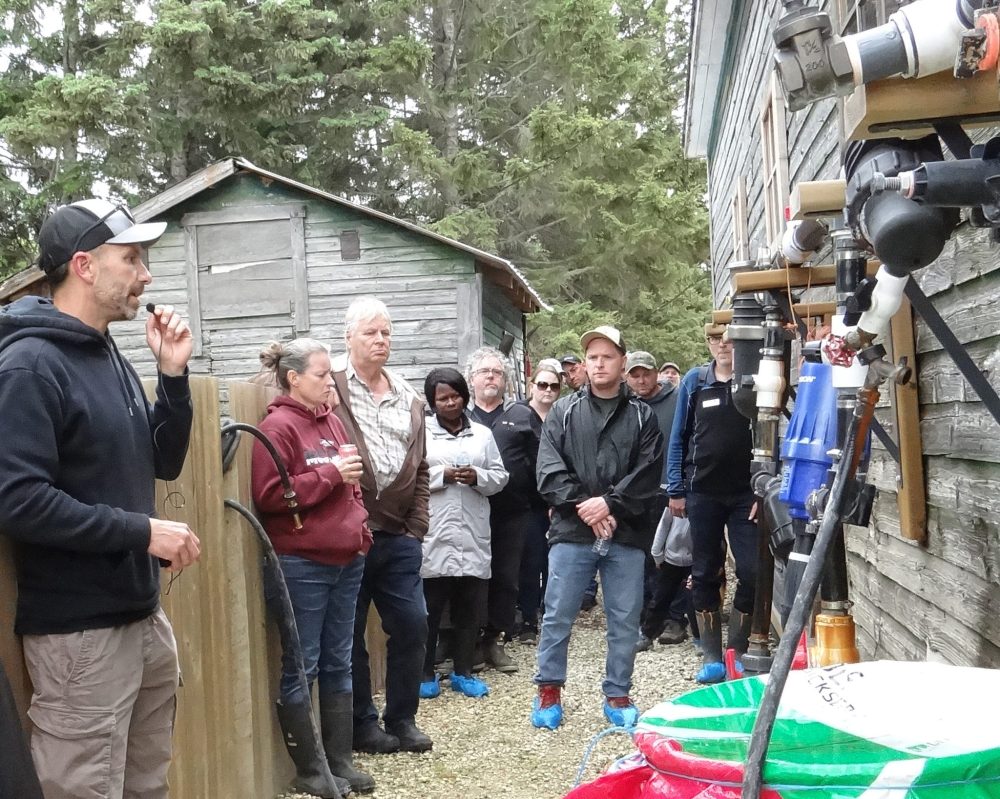Watershed is literary month focus for Agriculture in the Classroom
Advertisement
Hey there, time traveller!
This article was published 13/08/2024 (461 days ago), so information in it may no longer be current.
Water is wasted and polluted every day around the world, but the agriculture and food industry in Manitoba has had great success sharing about what farmers are doing to keep water clean and ensure the sustainability of watersheds for the benefit of all.
Manitoba’s 14 watershed districts, over the next three years, will be contributing $40,000, towards an Agriculture in the Classroom program focussed on watershed stewardship.
Katharine Cherewyk, Executive Director of AITC-M, says this welcome support marks a significant step forward in her organization’s mission to educate Manitoba’s youth about the importance of clean water and a sustainable watershed.

Starting with Canadian Agriculture Literacy Month (CALM) in March 2024, AITC-M introduced Caring for Our Watersheds to hundreds of Manitoba early years classrooms.
The resource is designed to engage students in Grades 2 to 4 in meaningful watershed education, including why watersheds are important, what Manitoba farmers are doing to protect them, and what everyone can do to preserve watersheds for today and future generations.
Farmers and other agriculture industry volunteers delivered the program to Manitoba schools in March, giving students a first-hand look at a number of things that are being used to keep runoff water from being polluted on the way to streams, rivers and lakes.
Students at the Sigurbjorg Stefansson Early School in Gimli provided an enthusiastic audience for Ladywood area farmer Everett Gibson as he spent an hour and a half sharing his farming experience with two combined Grades 3 and 4 classes there in early March.
Gibson’s presentation included videos and pictures of his farm in a very interactive way with the students, who were very interested in the topic of agriculture and what it was like to be a farmer.
Gibson manages the family farm, which has five acres of saskatoons, raspberries and haskap, along with a number of apple trees, acres of hay fields that produce bales for neighboring horse owners, and pastured poultry, which lay eggs to be sold to berry pickers.
Gibson said students enjoyed the video of his farm, filmed by a drone, and were most interested in the pastured poultry on the grass next to the acres of berry bushes.

Gibson said his watershed presentation included four activities to get the students thinking about watersheds, specifically, the importance of a watershed and how it can be protected and cared for.
The students were very interested in this topic once they understood what a watershed was. Gibson talked a lot about the importance of clean water, giving examples in the way Grades 3 and 4 students at the Gimli school could relate to.
“When you are playing soccer and you get thirsty you want a drink of clean water. When you are swimming in Lake Winnipeg, or out with your parents fishing, clean water is important.”
He also went over the importance of clean water for agriculture to keep the animals and crops healthy and how farmers support a clean watershed by activities such as injecting manure into the ground or using only the exact amount of fertilizer to grow a crop.
The final exercise was a practical demonstration of how the actions of a community, can impact the watershed. The students gathered around a watershed model and a washable marker was used to illustrated different sources of pollution, from highways, schoolyards, farms, and city streets and country roads and ditches.
The Agriculture in the Classroom volunteer sprayed water on the watershed model and the students got to see how pollution runs down into the watershed affecting the water quality for all of the community.

Gibson said he found it most rewarding to spend time with the Grade 3 and Grade 4 students at Sigurbjorg Stefansson Early School.
Gibson said the teachers were fantastic and very helpful with his presentation and explained how their students learned about growing food in a garden located just outside the school.
“I had several kids in Gimli excited to tell me that their fathers or uncles are commercial fishermen. These kids understand the link between farmers and fishers.”
Bolstered by the support from Manitoba Association of Watersheds, AITC is already planning watershed resources and content for middle and senior years students.
Future offerings will delve deeper into the intersection of agriculture and watershed stewardship, showcasing the proactive measures the agriculture community is taking to safeguard Canada’s water resources.
Over the last two years agriculture producers, in partnership with landowners and the watershed districts have created retention ponds to store water, conserved over 1,900 hectares of wetlands, created 28 kilometers of fenced areas to keep cattle from waterways and established more than 30 km of shelterbelts.
Cherewyk says Manitoba Association of Watershed’s funding commitment not only enhances Agriculture in the Classroom’s capacity to deliver impactful educational programming, but also serves as an invitation to other organizations to join in supporting the crucial work of teaching young people about agriculture and environmental stewardship.

Cherewyk says March was an incredible month for bringing the future generation of decision-makers closer to those who produce their food.
With in-person visits spanning Carman to The Pas, in French and English speaking schools, in both urban and rural settings, 155 agriculture industry volunteers brought their experiences, stories and hands-on activities, and an agriculture-themed book to 345 Manitoba classrooms during the month.
“We are humbled that so many amazing individuals in the agri-food industry share our vision of the CALM program, creating high-quality, fun and educational visits that leave an impact on students.”
